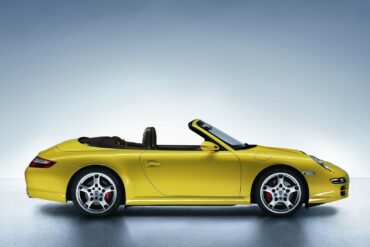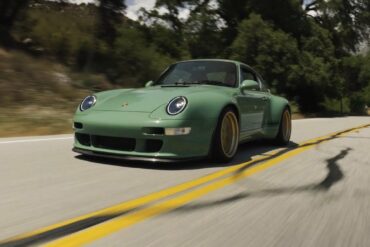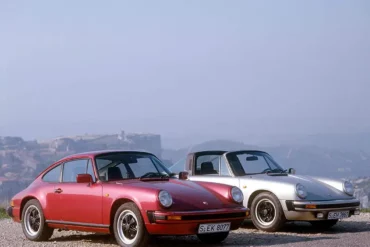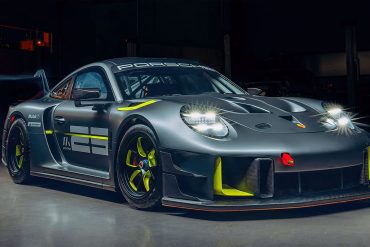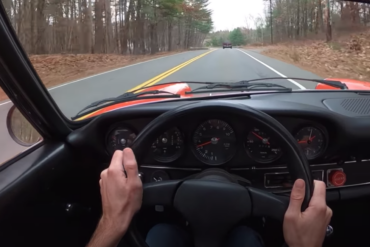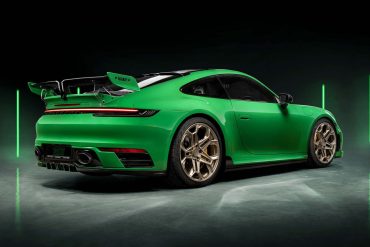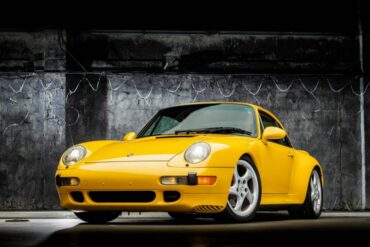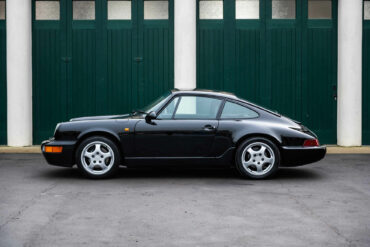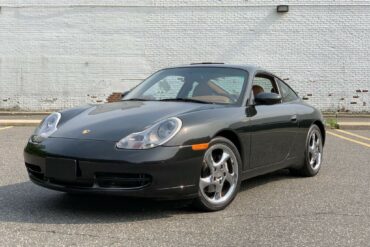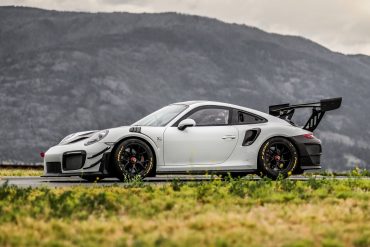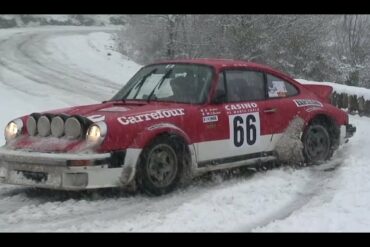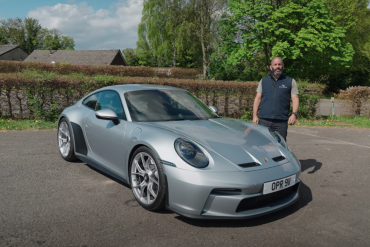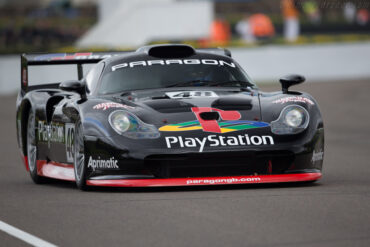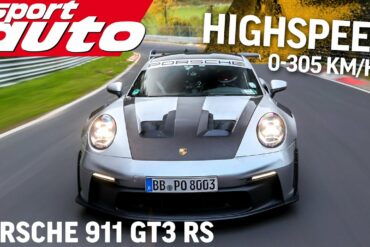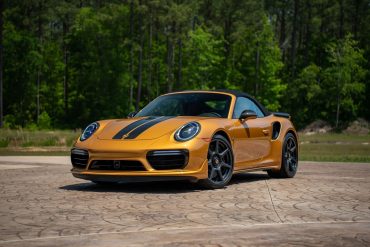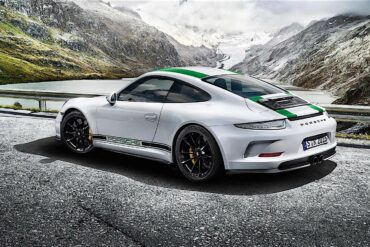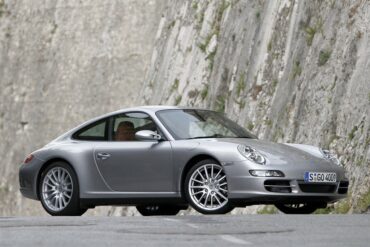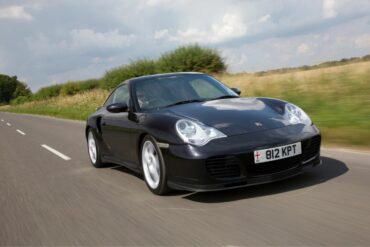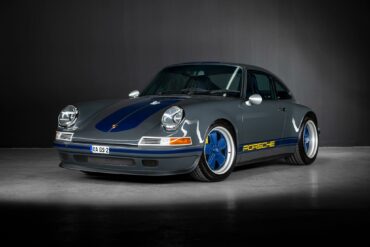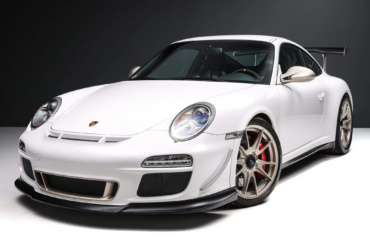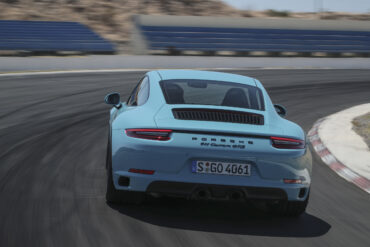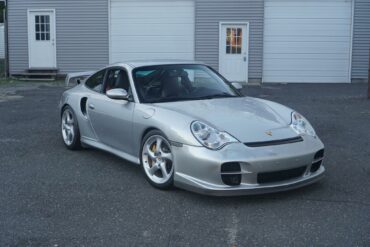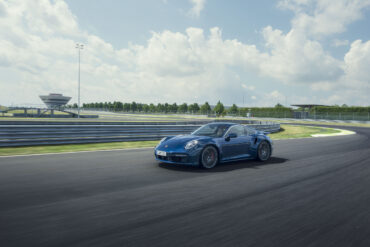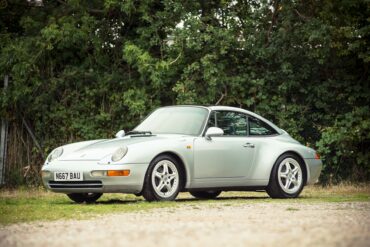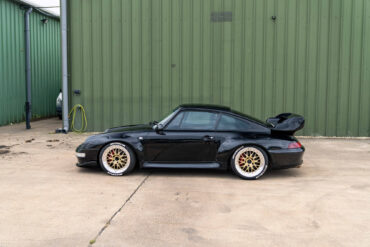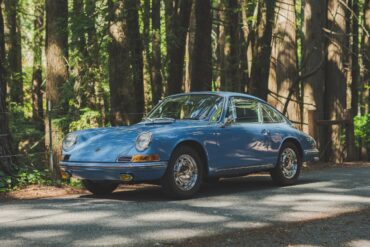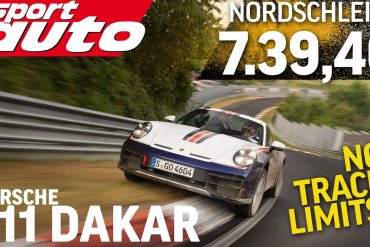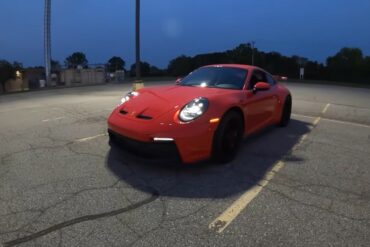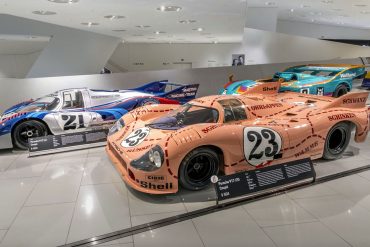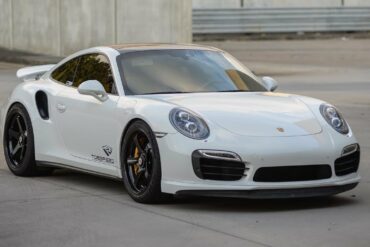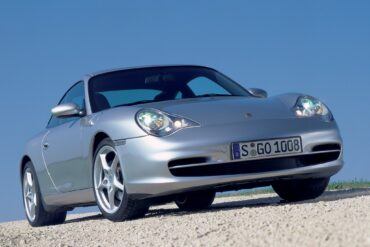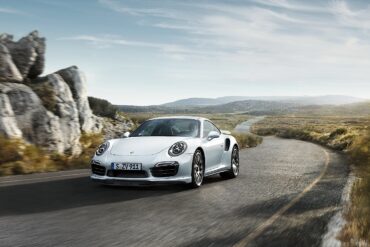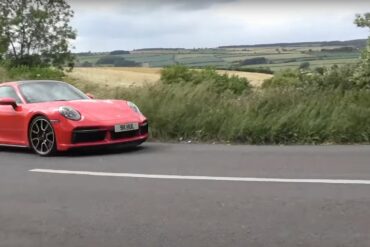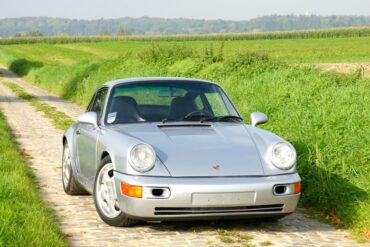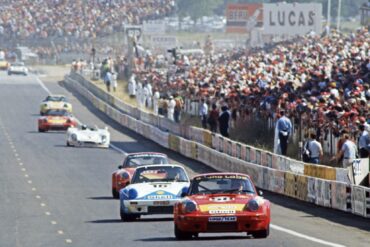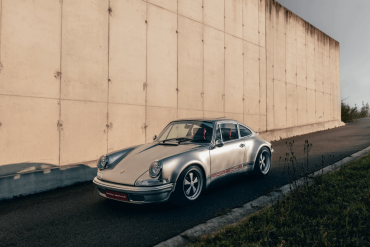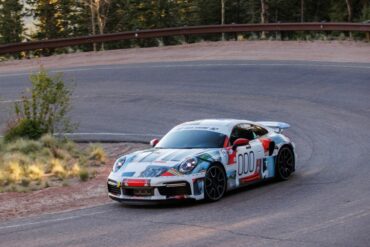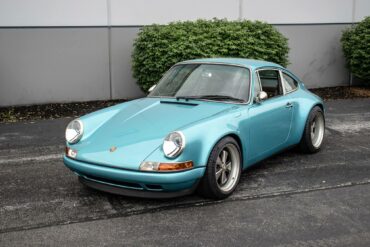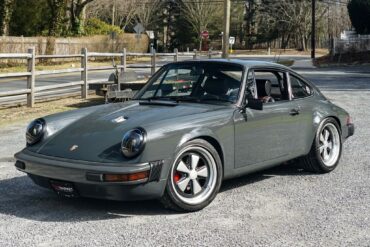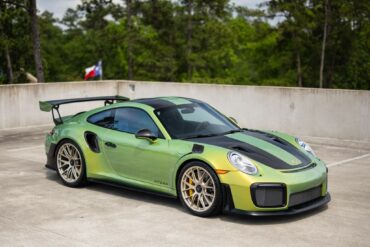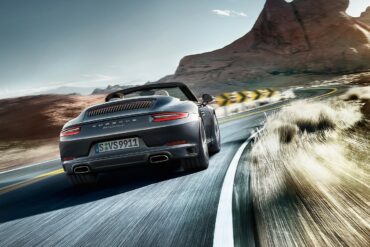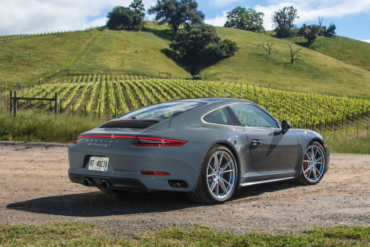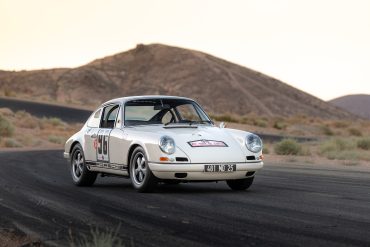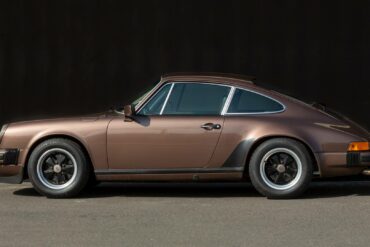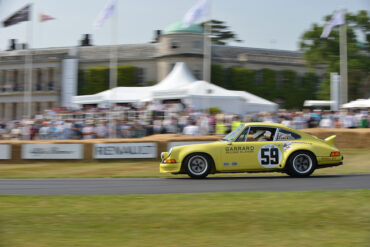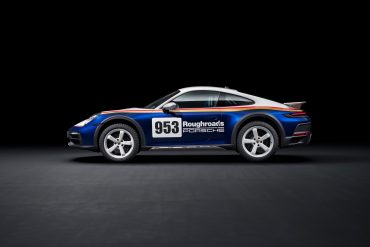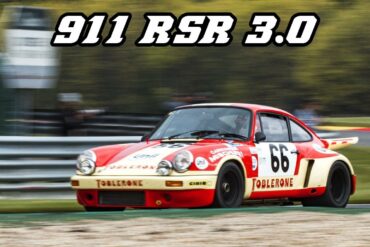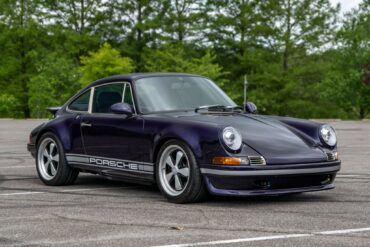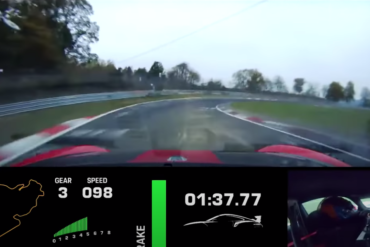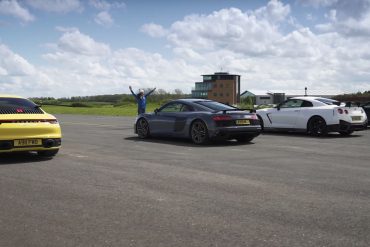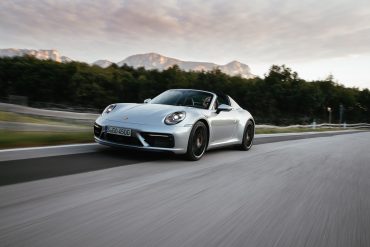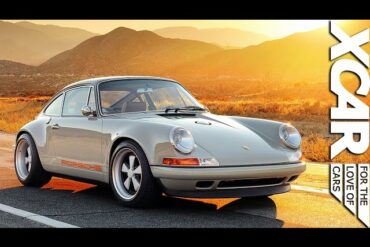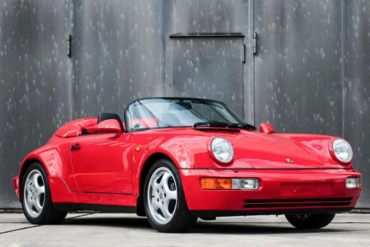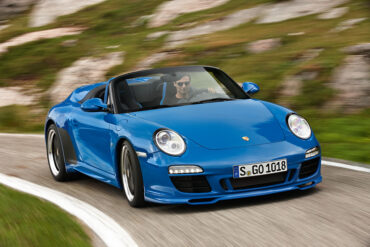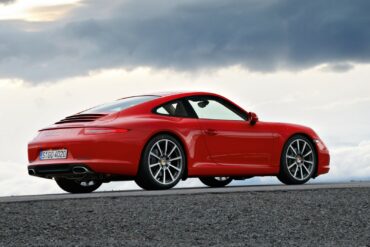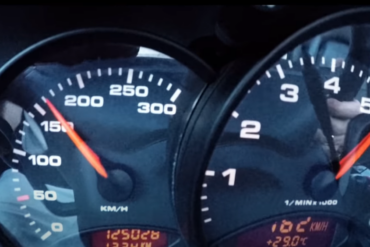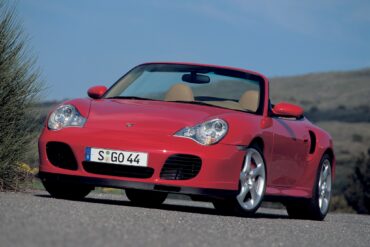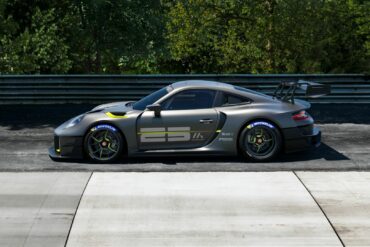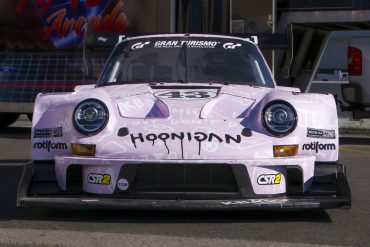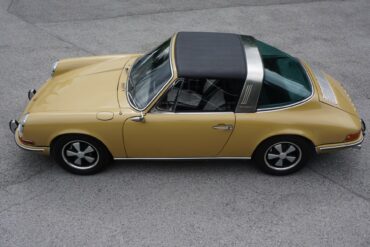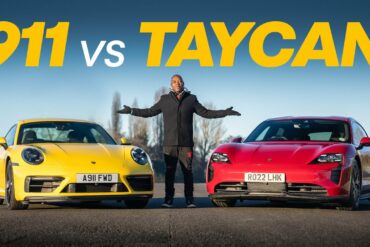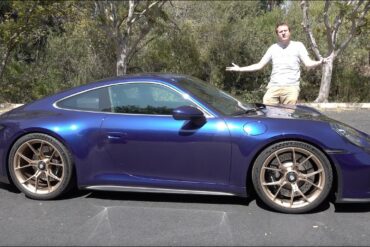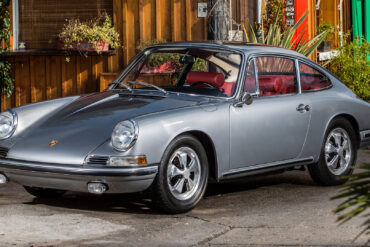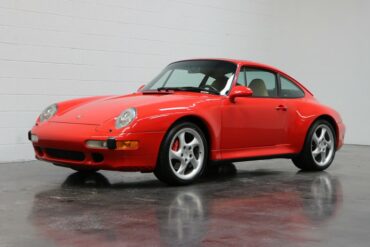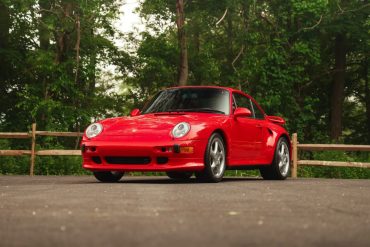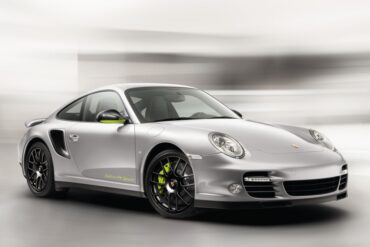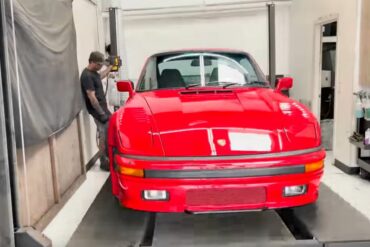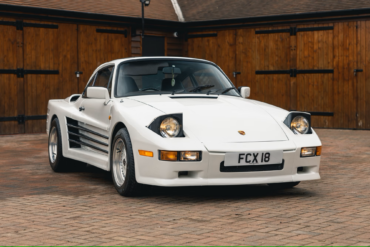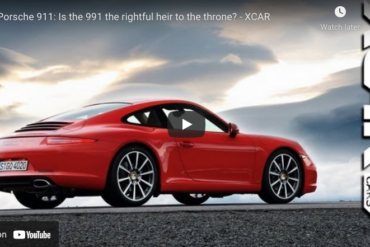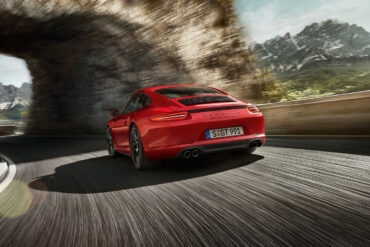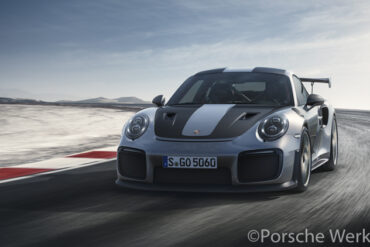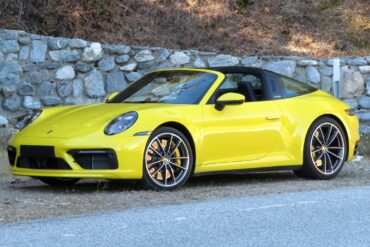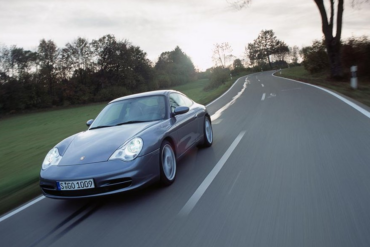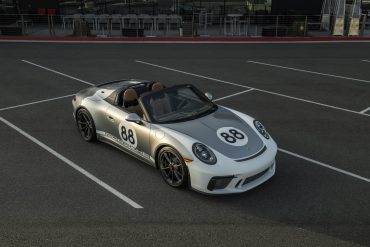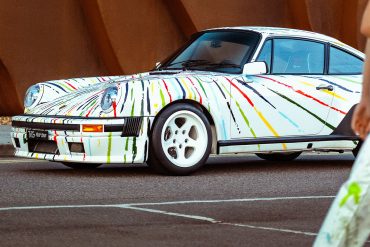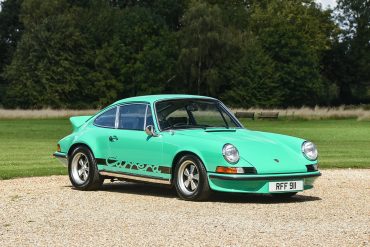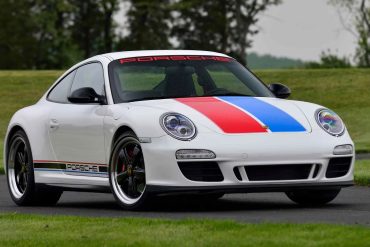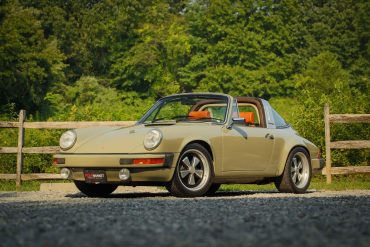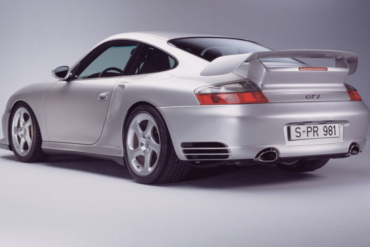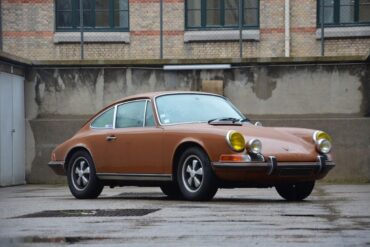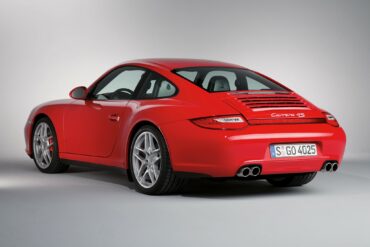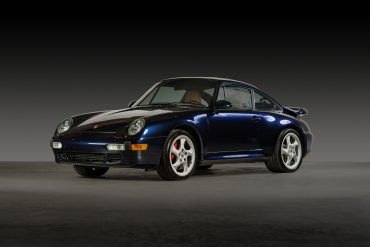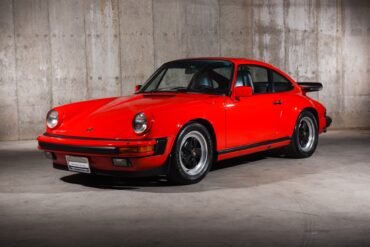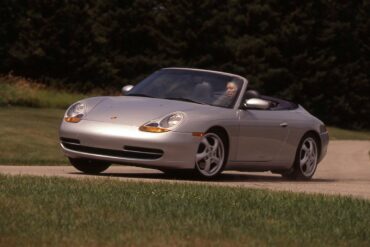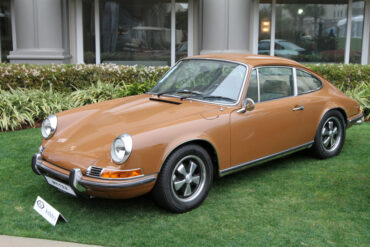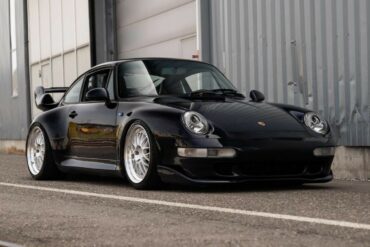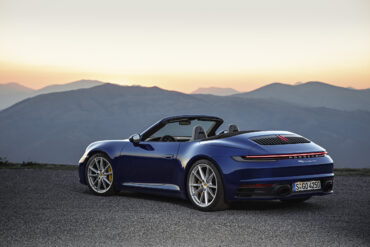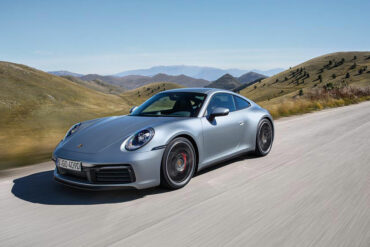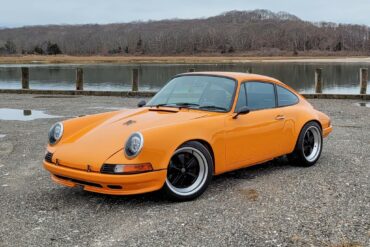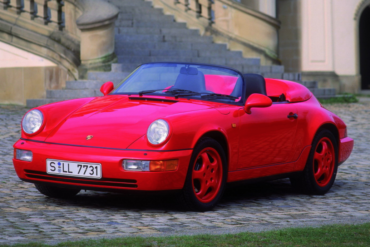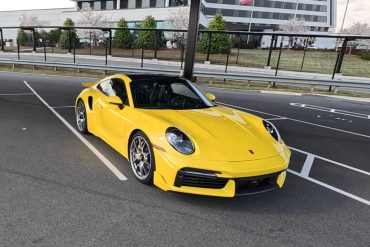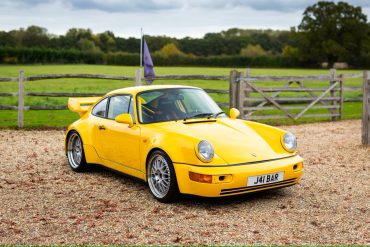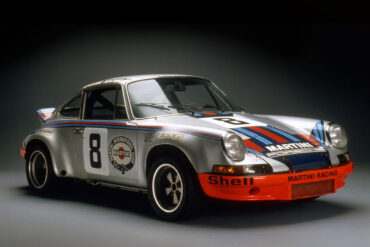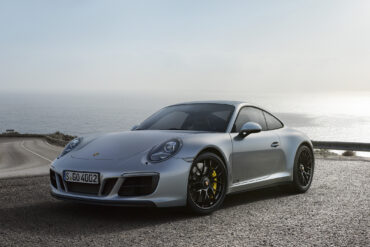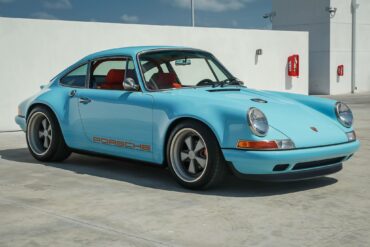2008 Porsche 911 Carrera S Cabriolet (997) Technical Specifications Engine Type Flat 6 Induction Normally-aspirated Cooling Water-cooled Valvetrain Double overhead...
Porsche 911
All
- Porsche 912
- 911 Carrera RS 2.7
- Porsche 901 (911)
- Porsche 911 (F-Series)
- Porsche 911 (991)
- Porsche 911 (G-Series)
- Porsche 911 (964)
- Porsche 911 (993)
- Porsche 911 (996)
- Porsche 911 (997)
- 911 Speedster Concept
- Porsche 911 (992)
- 964 Carrera 2
- 964 Carrera 4
- ’30 Jahre’ Anniversary
- 964 Speedster
- 964 Turbo
- 964 Carrera RS
- 964 Carrera Cup
- 964 RSR
- 993 Carrera
- 993 Carrera 4
- 911 Edition 50
- 993 Carrera 4S
- 911 2.0 Bertone Roadster
- 993 Carrera S
- 993 Targa
- 992 Sport Classic
- 993 Turbo
- 996 Carrera
- 993 Carrera RS
- 992 America Edition 911
- 996 Carrera 4
- 993 GT2
- 996 Targa
- 993 Carrera Cup
- 996 Carrera 4S
- 996 Turbo
- 996 Turbo S
- 996 GT3
- 996 GT3 RS
- 996 GT2
- 996 GT3 Cup
- 996 GT3 R
- 996 GT3 RSR
- 997 Carrera
- 996 GT3 RS Race
- 997 Carrera S
- 997 Carrera 4
- 997 Carrera 4S
- 997 Targa
- 911 Carrera 3.0 Coupe (G-Series)
- 997 Targa 4S
- 997 Turbo
- 997 Turbo S
- 997 GT2
- 992 Carrera T
- 997 GT2 RS
- 997 Speedster
- 997 Carrera GTS
- 992 Dakar
- 997 Carrera 4 GTS
- 997 GT3 Cup
- 997 GT3 R
- 997 GT3 RSR
- 997 GT3
- 997 GT3 RS
- 997 GT3 R Hybrid
- 991 Carrera
- 991 Carrera 4
- 991 Carrera S
- 991 Carrera 4S
- 991 Targa 4
- 991 Targa 4S
- 991 Turbo
- 991 Turbo S
- 991 Carrera GTS
- 991 Carrera 4 GTS
- 991 Targa 4 GTS
- 991 911 R
- Porsche 992 GT2 RS
- 991 GT3
- 991 GT3 RS
- 991 GT2 RS
- 991 Speedster
- 991 GT3 R
- 991 GT3 Cup
- 991 RSR
- 991 Carrera T
- 992 Carrera 2
- 992 Carrera 4
- 992 Carrera S
- 992 Carrera 4S
- 992 Targa 4
- 992 RSR
- 992 Targa 4S
- 992 Carrera GTS
- 992 Carrera 4 GTS
- 992 Targa 4 GTS
- 992 Turbo
- 992 GT3 R
- 992 Turbo S
- 992 GT3
- 992 GT3 Touring
- 992 911 S/T
- 911 (G-Series)
- 992 GT3 RS
- 992 GT2 RS
- 992 GT3 Cup
- 911 Carrera 3.0 (G-Series)
- 911 S (G-Series)
- 911 Carrera RSR 2.8
- 911 SC (G-Series)
- Porsche 992 GT3 R Rennsport
- 911 S/T
- 911 Carrera 3.2 (G-Series)
- 911 (Base Model)
- 911 Turbo (930)
- 911 SC Safari
- 911 L
- 911 Carrera RSR Turbo 2.1
- 911 T
- 911 Carrera RSR 3.0
- 911 E
- 911 S
- 911 SC San Remo
- 911 Carrera 3.2 Clubsport
- 911 R
- Porsche 953
- 911 Carrera RS 3.0
- 911 T/R
- 911 Carrera 25th Anniversary
- 911 SC RS
- 911 Turbo LE
- 911 Carrera Commemorative
- 911 Carrera 2.7 (G-Series)
- 911 3.2 Speedster
- 911 Turbo 2.7
- 964 Turbo S
The Gunther Werks 993 The Drive returns to the Gunther Werks headquarters to get an insider’s look at the new...
The 911 SC effectively replaced the 911 S and was one of Porsche's first models that was meant for the international market. It was sold as a cheaper alternative to the 911 Turbo. The SC used an unblown version the 930 Turbo unit that offered 180 to 200 bhp depending on model year. Options included the rear whale tail, front chin spoiler, Bilstein dampers, 16 inch wheels with Pirelli P7 tires and sports seats. Sometimes dealers lumped these options together to create their own sport package. It was available as a Coupe and Targa from 1978 - 1983, while the Cabriolet version was only available in 1983.
Time has shown us that Porsche is very conservative regarding partnering with outside firms. So, who they chose to collaborate...
The Air Cooled Classic 2.0L Flat Six You Need To Hear This 1969 911E is a great example of why...
The car is your canvas In today’s age of styling and performance accessories, the Porsche 911 certainly offers an inviting...
An Original Owner Car The Porsche 911 Carrera 4S coupe is a much-loved car by so many folks, and if...
1992 Porsche 911 Carrera 2 Coupe (964) Technical Specifications Engine Type Flat 6 Induction Normally-aspirated Cooling Air/oil-cooled Valvetrain Single overhead...
In 1999, Porsche celebrated the turn of the century with a special edition – the 996 “Millennium Edition”. Offered as...
The 911 GT2 RS Clubsport made its debut alongside the new 992-generation 911 at the 2018 Los Angeles Auto Show,...
Best of Porsche Rally Cars...
Porsche 911 (992) GT3 Touring Review Chris got the opportunity to get behind the wheel of the Porsche GB demonstrator...
There’s no doubt about it: the 911 GT1 EVO is still one of the best looking Porsches ever made and...
Despite not being designed for high-speed runs, the 992 GT3 RS can impressively achieve remarkable speeds in a straight line,...
With a limited production of just 500 units worldwide, the Porsche 911 Turbo S Exclusive Series lives up to its...
2016 Porsche 911 R (991) Technical Specifications Engine layout Rear Engine Engine type Boxer Cylinders 6 Valves per cylinder 4 Construction...
2006 Porsche 911 Carrera 4 (997) Technical Specifications Engine Type Flat 6 Induction Normally-aspirated Cooling Water-cooled Valvetrain Double overhead camshafts...
1997-2006 Porsche 911 (996) Carrera, Carrera S, Carrera 4, Carrera 4S, Targa, Turbo Service Schedule This maintenance service schedule checklist...
This 1991 Porsche 964 Carrera 4 was restored by GS Manufaktur in Germany, serving as the original prototype for the...
This particular 2011 Porsche 911 GT3 RS is one of only 541 built for the US market during a two-year...
2018 Porsche 911 Carrera GTS (991.2) Technical Specifications Engine Engine layout Rear Engine Engine type Boxer, twin-turbo Cylinders 6 Valves per...
The power unit featured in the new Porsche 911 GT2 is a high-performance evolution version of the six-cylinder horizontally opposed...
It would be a disservice to call this new Turbo a "lesser" car than the Turbo S, but it does have less in most departments. Less power at 573 HP. Less features compared to the jam-packed Turbo S. Most importantly, less money required to put one in your garage. This also is not to say that the new Turbo isn't anything short of a monster. It will still go 0 to 60 in 2.8 seconds, will corner like it was on rails with Porsche Torque Management (PTM) all-wheel-drive.
1998 Porsche 911 Targa (993) Technical Specifications Engine Type Flat 6 Induction Naturally Aspirated Cooling Air/oil-cooled Valvetrain Single overhead camshaft...
Collecting Cars is currently offering an impressive 24-car collection of rare exotics by a single owner which houses several Porsches....
The Porsche 911 was developed as a replacement for the highly successful Porsche Model 356. The Porsche 911 was larger, more...
In their newest video, German magazine Sport Auto took the off-road-focused 911 Dakar to the Nürburgring to see just how...
Get your earphones ready to fully enjoy this video’s binaural audio of the 2022 Porsche 911 GT3 night drive....
Fifteen years ago, the Porsche Museum opened its doors to visitors from all over the world for the first time....
One Take In An Aftermarket Turbo S This video was filmed at #GRIDLIFE Motorsports and Music Festival South, Road Atlanta....
Porsche 911 (996) Sales & Production Numbers Production of the 996 spanned nine years, between 1997 and 2006. In that...
2015 Porsche 911 Turbo S (991) Technical Specifications Engine layout Rear Engine Engine type Twin Turbo Boxer w/ VTG Cylinders 6...
Porsche mania seems to be taking over at the moment, mostly because the 2020 Type 992 911 Turbo S has...
The 964 Carrera RS (Standard) was introduced by Porsche for model year 1992 specifically for the European market as a lightweight, high performance version of the 964 Carrera 2. It featured a revised version of the standard 3.6 liter engine, titled M64/03 internally, with an increased power output of 260 bhp (194 kW; 264 PS). The RS does not look much different from the other 911 models of the period but its weight is reduced and power increased. True to its racing spirit, the Carrera RS featured bucket seats and thinner materials, but lacked power windows, air conditioning, air bags, and other creature comforts.
Ed note: The history of specific chassis used in notable races decades ago can be hard to verify but are...
The Madster RT is a remarkable European-market 1991 Porsche 964 Carrera 2 that underwent a complete restoration and customization by...
Pikes Peak is a mountain in Colorado where the annual Race to the Clouds is held. Watch as the Porsche...
The Sundown Commission is a stunning example of Singer’s craftsmanship and attention to detail. It features a beautiful Horizon Blue...
Dubbed “Mercy,” this 1978 Porsche 911SC Coupe has undergone a meticulous restoration and customization process, reaching an extraordinary level of...
Live now on PCARMARKET is a 2019 Porsche 911 GT2 RS with a stunning one-of-a-kind Python Green Chromaflair exterior finish...
2017 Porsche 911 Carrera Cabriolet (991.2) Technical Specifications Engine Engine layout Rear Engine Engine type Boxer, twin-turbo Cylinders 6 Valves per...
2019 Porsche 911 Carrera 4S (991.2) Technical Specifications Engine layout Rear Engine Engine type Boxer, twin-turbo Cylinders 6 Valves per cylinder...
Based on the 911 S, the 911 R was produced by Porsche to compete in the FIA’s GT 2.0 category....
1976-1977 Porsche 911 Carrera 3.0 Coupe Pictures & Gallery ...
1973 Porsche 911 Carrera RSR 2.8 Pictures & Gallery...
2023 Porsche 911 Dakar (992) Pictures & Gallery ...
Straight exhaust fly-by’s & downshifts Is there anything better than watching (and listening) to an aircooled RSR 3.0 hammering on...
Live now on PCARMARKET is a Canadian-market 1992 Porsche 964 Carrera 2 Coupe that was commissioned as a one-of-a-kind backdate...
Porsche 991.2 GT3 RS MR Nurburgring Video Porsche set a new record for road-approved sports cars on the 20.6-kilometre Nürburgring...
The Ultimate AWD Drag Race The website Carwow wanted to see just how the New Porsche 911 Carrera 4S stacks...
2022 Porsche 911 Targa 4 GTS (992) Technical Specifications Model 911 Targa 4 GTS Design and cylinders Twin-turbo boxer 6 Number...
Singer Vehicle Design: Porsche 911 Re-Imagined, Original Spirit – XCAR Meet Rob Dickinson, the founder of Singer Vehicle Design. This...
In contrast to the 911 Speedster from the 1989 model year, the 964 Speedster was only offered and produced with the narrow body shape. In December 1991, the first wide bodied prototype based on a 964 Carrera 2 Convertible Turbo-Look was registered at Porsche AG, but it never made it ready for a series production. In response to recurring customer requests for Turbo-Look Speedsters - the optical characteristics of the wide body in combination with the flat windscreen and fiberglass cover had found many fans - Porsche converted the previously individually ordered, narrow Speedster in the exclusive department.
Paying homage to the first Porsche model that bore the name Speedster – the 356 Speedster – the production run for the new model is limited to 356 cars. The two-seater is significantly different from the other members of the 911 family. In the best tradition, the 60 millimetre lower, more raked windscreen, the flat contour of the sporty-look manual hood, and the characteristic double-bubble hardcover for the soft top define the striking profile of the new 911 Speedster. This makes the body of this rear-wheel drive with its 44 millimetre wider rear stand out even more.
2014 Porsche 911 Carrera Coupe (991) Technical Specifications Engine Type Flat 6 Induction Normally-aspirated Cooling Water-cooled Valvetrain Four overhead camshafts, four...
Hard Acceleration in 996 Carrera Scene taken from Episode 6 of cars moving parts by isaflummi. Acceleration to V-Max on...
Introducing this new top-of-the-range model, Porsche is once again placing a 911 Turbo Cabriolet right at the top of the family after a break of 14 years: From 1987 - 1989 the Porsche 930, as the first Turbo was code-named within the Company, set the first milestone in the history of these outstanding open-air sports cars. With cylinders still featuring two valves each at the time, the 3.3-litre power unit driving the first Turbo Cabriolet offered maximum output quite unique at the time of 300 bhp or 221 kW. Acceleration from 0 to 100 km/h was in 5.2 seconds and the car had a top speed of 260 km/h or 161 mph.
2021 Porsche 911 GT2 RS Clubsport 25 Pictures & Gallery...
If you think post-war sports cars or muscle cars from the late 1960s are the staple of the collector car...
1969 Porsche 911 E Targa 2.0 (LWB) Technical Specifications Engine Type Flat 6 Induction Normally-aspirated Cooling Air/oil-cooled Valvetrain Single overhead...
The Porsche 911 embodies sports car perfection. It has speed, precision, and is exceedingly fun to drive! On the other...
The new GT3 Touring Review 2022 Porsche 911 GT3 Touring review! The new GT3 Touring is absolutely the GT3 I...
Porsche 911 (Classic) Technical Specifications & Model Comparison (European Variants) Comparison: European specs 911 2.2 Comparison: European specs 911 2.4...
1998 Porsche 911 Carrera 4 (993) Technical Specifications Engine Type Flat 6 Induction Naturally Aspirated Cooling Air/oil-cooled Valvetrain Single overhead...
The final air-cooled 911 Turbo from Porsche was the Type 993 Turbo S, offering a remarkable conclusion to that era....
The Porsche 911 is a legendary car, and the RS trim represents the pinnacle of on-track performance. But how does...
Based on the 530-bhp 911 Turbo S, the special-edition Porsche has carbon-fiber trim inside and out, plus upgraded leather, badging and the exterior colors of the 918, including the use of Acid Green on the brake calipers, illuminated sill plates, interior stitching and instrument cluster needles. Also limited to 918 units, the 911 Turbo S Edition 918 Spyder will be available in Coupe ($160,700) and Cabriolet ($172,100) forms, making this one very expensive dealer option.
The Porsche 930 Turbo might not be as valuable or coveted as the early Porsche 911, but recently a special...
The Rinspeed Porsche R69 Turbo, aka Porsche Testarossa, was a limited production car from Switzerland. It is believed that around...
Carfection Reviews the New 991.2 Carrera S A new 911 is always something to pay special attention to. It’s the...
2015 – 2016 Porsche 911 Carrera GTS (991) Pictures & Gallery ...
The Porsche 911 GT2, primarily built for racing but still road-legal, has a lineage tracing back to the iconic 1973...
The new Porsche 911 GT2 RS, the most powerful road-approved 911 of all time, celebrated its world premiere at the...
Matt Farah Gives Us His POV on the Targa 4S The new 2020 Porsche 911 (992-series) Targa 4S, as is...
Ultimate Track Test Introducing the ULTIMATE 911 – the Porsche 911 GT2 RS! When it comes to road-going sports cars,...
2004 Porsche 911 Carrera Coupe (996.2) Technical Specifications Engine Type Flat 6 Induction Normally-aspirated Cooling Water-cooled Valvetrain Double overhead camshafts...
The convertible version of a performance car is often debated as unnecessary by some people, citing the reduction in structural...
The 2019 Porsche 911 Speedster is the beneficiary of Stuttgart’s latest fixings, while also serving as a throwback to the Porsche 356...
British automotive engineering specialist, Lanzante, will once again deliver a stellar line-up for the Goodwood Festival of Speed. No less...
Revealed at the 1972 Paris Auto Show, the Carrera 2.7 RS was a special model used to homologate the 911...
Porsche and Brumos Racing have once again delved into their shared history to craft an exceptional Porsche 911 Carrera GTS...
This is a one-of-a-kind 1979 Porsche 911SC Targa featuring a Stone Grey exterior complemented by a bespoke interior featuring brand-new...
2002 Porsche 911 GT2 (996) Technical Specifications Engine Type Flat 6 Induction Twin-turbocharged Cooling Water-cooled Valvetrain Double overhead camshafts Injection...
Along with all the C-series improvements to the 911 line, the 1970 Porsche 911 S was upgraded to include a 180 bhp version flat-6. This further improved the performance credentials of the model which already had Fuchs light alloy wheels and bigger brakes. Specific to the S model's engine was a re-profiled camshaft, larger valves, better porting, higher compression and larger jets for the Weber carburetors. This resulted in 30 more horsepower for a total 180 horsepower.
2012 Porsche 911 Carrera 4S Coupe (997.2) Technical Specifications Engine Type Flat 6 Induction Normally-aspirated Cooling Water-cooled Valvetrain Double overhead camshafts Injection...
This is the last of the aircooled 911 turbos. Porsche introduced the Turbo for the 1995 model year. It had...
Porsche Option Codes – Porsche 911 (1986 Model Year) Looking to decode your 1986 Porsche 911 option codes? Want to...
Porsche Option Codes – Porsche 911 (1999 Model Year) Looking to decode your 1999 Porsche 911 option codes? Want to...
1970 – 1971 Porsche 911 T 2.2 Coupe (LWB) Pictures & Gallery...
This Swiss based 993 Turbo looks like it has some really nice touches. The perfect stance....
2020 Porsche 911 Carrera S vs 2010 Porsche 911 Carrera S This is the new 2020 911 Carrera S, and...
2020 – Present Porsche 911 Carrera 4S Cabriolet (992) Pictures & Gallery...
If the base 911 coupe doesn't do it for you, maybe the Carrera S coupe gets you over the line. For about $20k more, you get more horsepower, torque vectoring and bigger wheels. The Carrera S uses a version of the 3.0L twin-turbo flat-6 that generates 443 hp and 390 lb-ft of torque. Torque vectoring allows different amounts of torque to be distributed between drive wheels on the same axle. This means the inside wheel can turn slower than the outside wheel for improved cornering.
This 1981 Porsche 911SC Coupe underwent a custom backdate-style restoration that spared no expense on high-end equipment. The Coupe was...
1993-1994 Porsche 911 Speedster (964) Technical Specifications Engine Type Flat 6 Induction Naturally Aspirated Cooling Air/oil-cooled Valvetrain Single overhead camshaft Injection...
The current Turbo S comes with an all-new, 3.8 liter boxer six with two variable turbine geometry (VTG) turbochargers. The...
The Porsche 964 Carrera RS Clubsport, also known as the N/GT, is a rare lightweight 911 from the early 1990s....
Most Porsche fans know little about this epic wide-bodied 911 based race car. While the iconic 2.7 RS is every fan boys...
2017 – 2019 Porsche 911 Carrera 4 GTS (991.2) Pictures & Gallery...
The Puerto Rico Commission stared out as a US-market 964 Carrera 2 that has been disassembled and rebuilt with a...


